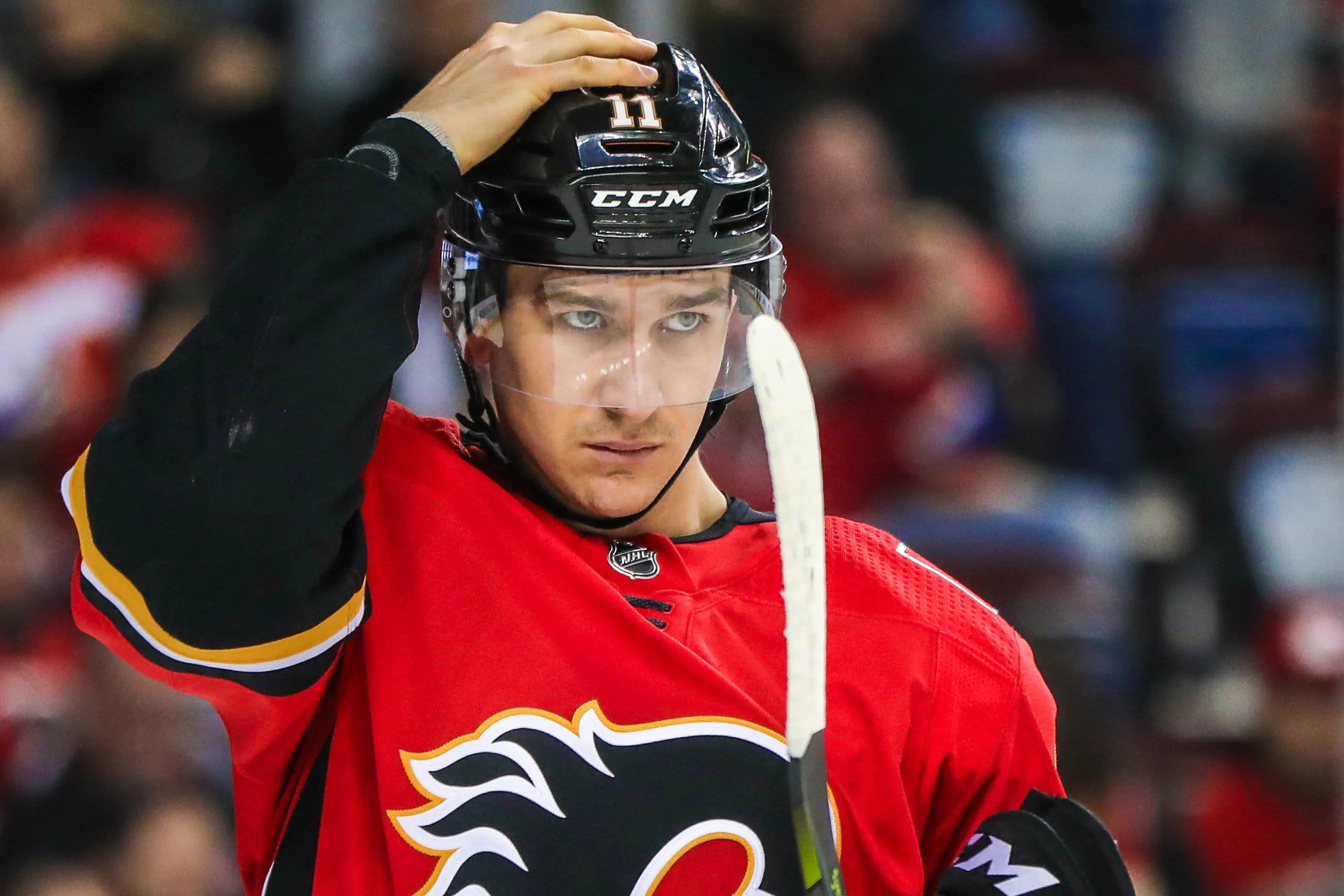FlamesNation player evaluation: Mikael Backlund

By Ryan Pike
5 years agoMikael Backlund is a reliable hockey player. The product of Vasteras, Sweden has become a foundational piece of the Calgary Flames lineup over the past half-decade, rising from being a fourth liner in the early days of Bob Hartley’s tenure to a consistent name in Selke Trophy conversations.
The 2017-18 campaign saw Backlund take a step forward and a step back, as his box-car statistics took a bit of a tumble but he was arguably more important to the Flames’ success than he ever has been. He also signed a six-year contract extension that’ll see him with the club through the 2023-24.
2017-18 season summary
Stop me if you’ve heard this tale before. Because Sean Monahan is more of an offensive force than a reliable 200-foot player, Monahan’s line got a ton of offensive zone starts and avoided tough matchups while Backlund’s line got more defensive zone starts and matched against the toughest competition on the other team.
Backlund played more per game than any Flames forward not named Johnny Gaudreau – even more than Monahan. A lot of that was likely a result of Backlund being such a fixture on the club’s special teams units; he was consistently on the second power play unit and the top penalty kill unit all season, so that time added up. He played almost exclusively with Michael Frolik and Matthew Tkachuk on the vaunted 3M line.
| Games played | Goals | Assists | Points | TOI/GP | 5v5 CF% | 5v5 CF% rel | OZS% | PDO |
| 82 | 14 | 31 | 45 | 19:01 | 56.22 | +3.81 | 46.20 | .951 |
One of the reasons that Backlund didn’t return to Selke contention this season was how leaky the Flames were when he was on the ice. He had the worst plus/minus rating on the entire team, but a lot of that was driven by percentages – he had an 5.7 on-ice shooting percentage (second worst among regulars) and a .894 on-ice save percentage (worst among regulars). His possession numbers were nuts, as always, but the puck luck just wasn’t there; in many ways, Backlund was the 2017-18 Flames embodied in a single player.
Compared to last season
Backlund shot the puck a ton this year, setting career highs for shots and individual Fenwick, Corsi and scoring chances. Unfortunately, the puck just didn’t go into the net. His personal shooting percentage was 6.5, his lowest since his injury-shortened 2010-11 season, and well below last season’s 11.2%. A career average year (8.9% shooting) would’ve had Backlund score 19 goals and matching last season would’ve had him score 24.
Like the entire team, Backlund didn’t do great on the power play this season. In 2016-17, he had 33 scoring chances, seven goals and 16 points. In 2017-18, he had 20 scoring chances, three goals and 11 points. He wasn’t the reason why the Flames didn’t score a ton on the power play, but the team definitely needed more out of him this season.
A few years back, the big knocks on Backlund were that he couldn’t stay healthy and that he couldn’t score consistently. Well, the 2017-18 season was the third in a row where he played over 80 games – he’s missed one game in the past three seasons – and even with his on-ice percentages collapsing like a dying star, he still had his third consecutive 45-point year. If he had any puck luck whatsoever, he would’ve hit 50 points for the second straight season.
What about next season?
Backlund has a very well-defined role on the Flames and it’s unlikely that’ll change under Bill Peters. He’ll be relied upon to be the team’s tough minutes center and shut down the opposition, but also counted on to consistently contribute offensively. Given that he’s the forward that plays the most combined special teams time, a turnaround by the Flames’ PP and PK will have to be driven, at least in part, by strong performances by Backlund in both those game situations.
The good news is that “consistency” has been Backlund’s catchphrase over the past few seasons. Barring the Swede suddenly forgetting how to do everything he’s good at over the summer, it’s likely that he’ll be able to produce another 40-point season. If Tkachuk can continue his progression or Frolik can have a bounce-back 2018-19 season – or perhaps both happen – then another 50-point year isn’t out of the realm of possibility.
| #5 – Mark Giordano | #7 – TJ Brodie |
| #8 – Chris Stewart | #10 – Kris Versteeg |
Recent articles from Ryan Pike




